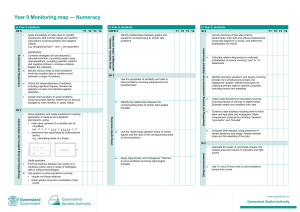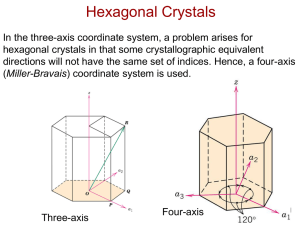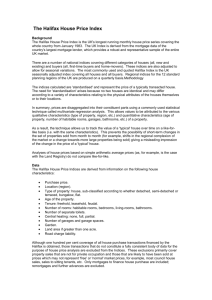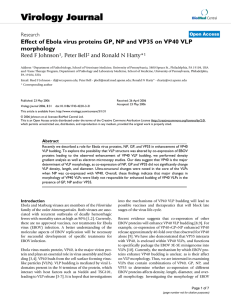Risk High Risk Low Risk
advertisement
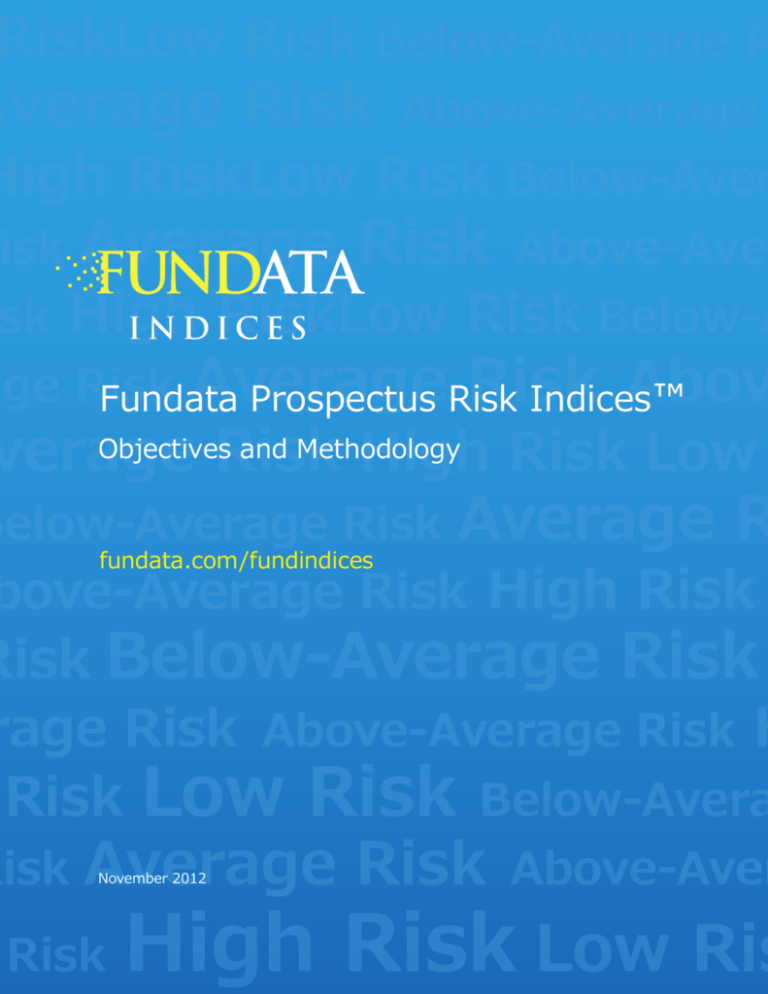
RiskLow Risk Below-Average R Average Risk Above-Average High RiskLow Risk Below-Aver isk Average Risk Above-Aver sk High I N D IRisk C E S Low Risk Below-A Average Risk Abov age Risk Fundata Prospectus Risk Indices ™ Objectives and Methodology High Risk Low verage Risk Below-Average Risk Average R fundata.com/fundindices bove-Average Risk High Risk Risk Below-Average Risk rage Risk Above-Average Risk H Risk Low Risk Below-Avera Risk Average Risk November 2012 Risk Above-Aver High Risk Low Ris Introduction The purpose of the Fundata Prospectus Risk Indices is to compare the performance and volatility of prospectusissuing funds with similar risk classifications. The indices track the performance and risk-return profiles of the constituent mutual funds in each of the five prospectus risk rating groups: Low Risk Low to Medium Risk Medium Risk Medium to High Risk High Risk This unique segmentation of the Canadian retail fund market space allows investors, advisors, and regulators to determine whether or not a fund is categorized with the appropriate risk classification and whether or not the level of return is acceptable for the given risk level. indices@fundata.com 416.445.5534 x240 / 888.328.9174 x240 01 Objectives Indices based on asset mixes, sector mixes, and geo- ate a unique segmentation of the Canadian mutual graphical mixes are prevalent and largely available fund market. Fundata collects prospectus risk data to the public. For the most part, these indices are in- on an ongoing basis with tested algorithms in place vestable (one can invest in a portfolio to replicate the to ensure current and accurate data. The Fundata index), quantifiable (the performance of the index is database has over 12,300 active prospectus-issuing easily measurable), and transparent; however, they funds, and Fundata has collected a prospectus risk can differ significantly in understandability. rating on 99.9% of these funds. The general purpose of existing indices is to provide Prospectus Risk rating is one of Fundata’s most performance comparison of a security or portfolio, or popular and unique data points, because investors to give an overview of the performance of the mar- and advisors are becoming increasingly aware of ket or a segment of the market. The segmentation is the importance of considering investment risks. The generally what makes an index unique, the purpose Fundata Prospectus Risk Indices are intended to give of segmentation being to provide comparison be- mutual fund investors and advisors a tool for perfor- tween similar securities. mance comparison among mutual funds with similar risk prospects. The motivation for creating the Fundata Prospectus Risk Indices stemmed from the opportunity to cre- There are several important properties assumed by a good index (Financial Enterprise Risk Management, Paul Sweeting, 2011): Unambiguous: The components and constituents should be well defined. Investable: It should be possible to buy the components and track the index. Measurable: It should be possible to quantify the value of the index frequently. Appropriate: It should be consistent with an investor’s style and objectives. Reflects current investment opinion: It should contain components about which the investor has opinions, both positive and negative. Specified in advance: It should be known by all participants before the period of assessment has begun. indices@fundata.com 416.445.5534 x240 / 888.328.9174 x240 02 Structure and Creation Constituent Funds ered a widely understood risk measure and the most effective tool in quantifying the price volatility risk of First and foremost, only funds with more than three a fund. According to the IFIC Voluntary Guidelines for years of history are considered. Merged and ter- Fund Managers Regarding Fund Volatility Risk Clas- minated funds are included in the historical index sification, standard deviation is the best measure components at the time of their existence to avoid of portfolio risk and thus should be related to the survivorship bias. Funds with more than three years prospectus risk ranking assigned to the fund. As a are grouped according to their prospectus risk clas- result, prospectus risk classification is assumed to be sification at the beginning of the month. Institutional largely derived from the potential standard deviation and F-Series funds are excluded on the basis of the of the price movement of the fund. For this reason, different fee structures and the lack of availability three-year annualized standard deviation is used for to the retail investor. U.S. dollar funds are excluded identifying potential outliers in each group. when they are a purchase option of a Canadian dollar fund because the different currency can add a level This can cause significant discrepancies when com- of risk not necessarily accounted for in the prospec- paring the standard deviation of the given fund versus tus risk rating. Money Market funds are excluded on the standard deviation of other funds with the same the basis that there is very little variation among the classification. funds in terms of performance or risk-return profiles. The inclusion of Money Market funds would require For example, a fund with prospectus risk rating of that they be grouped with the majority of fixed- “Medium” can actually show a standard deviation income funds, which has been determined to be an that is very high and matches more closely with the unjust comparison. funds in the ”High” rating group. Such funds can be considered misclassified or outliers relative to the rest Funds that meet the criteria above are subject to of the funds with the same risk classification. Several an outlier test outlined below. The test is applied to methods were considered to eliminate or dampen the each group individually. effect of these misclassified funds. Outliers In determining a method to identify outliers, the underlying data was tested for normality. Initially There was a need to identify and remove outliers the PP-Plots showed that the data was not normally from each group to prevent potentially misclassified distributed for all groups and therefore the normal- funds from having significant influence on the data. ity assumption could not be used in determining and An outlier is defined as “an observation from a differ- eliminating outliers. After Money Market funds were ent distribution than the rest of the data.” removed, the data showed a distribution much closer (http://www.cee.vt.edu/ewr/environmental/teach/ to normal. smprimer/outlier/outlier.html) Four methods were considered for identifying outliers including percentiles, Z-score, modified Z-score, and In the case of prospectus risk data, mutual fund Inter-Quartile-Range. The Inter-Quartile-Range (IQR) managers can assign a level of risk that they feel is method was chosen. suitable for the fund. Standard deviation is considindices@fundata.com 416.445.5534 x240 / 888.328.9174 x240 03 Inter-Quartile Range (IQR) The IQR method considers the overall volatility of the group by determining the first and third quartiles of the group. Taking the difference between the first and third quartiles identifies the level of concentration within the group and thus provides some insight as to the overall volatility of the group. This ensures that the overall volatility of the group is considered before identifying any outliers. It is expected that the overall volatility of each group will change over time, and therefore the IQR numbers are run every month as opposed to creating fixed thresholds. The IQR is the difference between the first and third quartiles in the data set. Data points are considered to be outliers if they are: 1. Less than the Lower Fence (first quartile minus 1.5 times the IQR) 2. Greater than the Upper Fence (third quartile plus 1.5 times the IQR) Inter Quartile Range = Q3 - Q1 Lower inner fence = Q1 - 1.5 x IQR Upper inner fence = Q3 + 1.5 x IQR After the risk ratings of the outliers are checked, the list for each risk group is published along with the constituents every month. indices@fundata.com 416.445.5534 x240 / 888.328.9174 x240 04 Methodology Several different possibilities were considered for the methodology of the Fundata Prospectus Risk Indices. The Laspeyres’ concept takes the value of a “basket” of goods at a specific point in time and then measures the change in the values of the same basket of goods at a later point in time. The change in the index is based on the change in the value of the basket of goods. The “active index” approach for mutual funds looks at the individual holdings of each constituent fund. A base value is created by multiplying the market price by the quantity of each constituent fund’s holdings on the base date. A current market value is then created by taking the current market price of the same shares that were evaluated on the base date. Market weighted indices assign a weighting to each constituent based on market capitalization. The market value of the index is then calculated by adding the collective market caps of the constituents and dividing by the total number of securities belonging to the constituents. The Fundata Prospectus Risk Indices are equal weighted. In other words, each constituent mutual fund is assigned the same weight towards the index movement. Fundata has an extensive mutual fund database complete with monthly performance figures for over 12,300 mutual funds. Because a mutual fund is unitized by calculating the net asset value per share (NAVPS), taking a “size weighted” average is not necessary. Performance Index Risk versus Return Index Each performance index is constructed by taking the The Risk versus Return Index is based on the same average monthly returns of the constituent funds constituents as the Performance Index. Funds are within each Prospect Risk group. This average is then grouped according to prospectus risk rating, and applied to an index value to determine the change in their 3-year annualized standard deviation is plotted the index value. Historical monthly returns are used against their 3-year compound return in scatter plot to back-fill the index. format. The same is done for 5-year standard deviation and compound return. indices@fundata.com 416.445.5534 x240 / 888.328.9174 x240 05 To be repeated each month: 1. The starting index value is determined (value of 1,000 at January 1, 2000). 2. The constituents test is run. 2.1 Funds must have at least three years of history. 2.2 Funds with terminated or merged status are added to avoid survivorship bias. 2.3 Money Market funds are excluded. 2.4 Institutional and F-Series funds are excluded. 2.5 U.S. dollar funds are excluded when they are a purchase option of Canadian dollar funds 2.6 Funds are grouped according to prospectus risk ratings on the first day of the month. 2.7 The outlier test is run. 3. Funds that survive the outlier become the constituent funds. 4. The average 1-month return of the constituent funds is calculated for each risk group and applied to the previous value of the index. 5. New index value is created. By using Fundata’s data warehouse, there will be no survivorship bias. Occasionally Fundata is required to make changes to the historical NAVPS or distributions of a fund. The historical index values will be frozen and will not vary, even with changes in Fundata’s historical database unless the change is deemed significant enough to have a substantial impact on the value of the index. In that case the change will be announced to subscribers, and the index values will be recalculated. indices@fundata.com 416.445.5534 x240 / 888.328.9174 x240 06 Disclaimer The Fundata Prospectus Risk Indices (the “Indices”) are for informational purposes only and are not intended to provide investment, financial or other advice, and such content should not be relied upon for such advice. Fundata Canada Inc. (“Fundata”) is not an investment advisor, and inclusion of a mutual fund within the Indices is not a recommendation by Fundata to buy, sell, or hold securities in such mutual fund, nor shall it be considered to be investment advice. To the fullest extent permitted by law, Fundata disclaims all representations, warranties, conditions, and guarantees, express or implied, in connection with the Indices, including, without limitation, any representations, warranties, conditions, or guaranties regarding accuracy, timeliness, completeness, availability, freedom from errors or omissions, or quality or fitness for any particular purpose. Fundata has created the Indices using information obtained from sources believed to be reliable, but provides no representations or warranties as to the accuracy or completeness of any such information. Fundata does not take the needs of any particular user of the Indices into account in determining, composing or calculating the Indices. In no event shall Fundata be liable to any party for any damages, costs, or losses of any kind whatsoever in connection with any use of the Indices, even if advised of the possibility of such damages. The views, opinions and advice of any third party provided in connection with the Indices reflect those of the individual authors and are not endorsed by Fundata. Fundata has not prepared, reviewed or updated the content of third parties, and Fundata assumes no responsibility for such information. indices@fundata.com 416.445.5534 x240 / 888.328.9174 x240 07 Transforming raw market data into mission-critical information flow At Fundata, we offer our clients the most accurate and comprehensive data on Canadian Investment Funds that is available in the market. Combined with our commitment to fast, flexible client service, the quality of the information we provide makes us the vendor of choice for your market data and analytical requirements. Fundata Canada Inc. 38 Lesmill Road Toronto, Ontario Canada M3B 2T5 Email: indices@fundata.com Toll-free: 1.888.328.9174 x240 Voice: 416.445.5534 x240 Fax: 416.445.4504 fundata.com/fundindices


![[#EXASOL-1429] Possible error when inserting data into large tables](http://s3.studylib.net/store/data/005854961_1-9d34d5b0b79b862c601023238967ddff-300x300.png)

